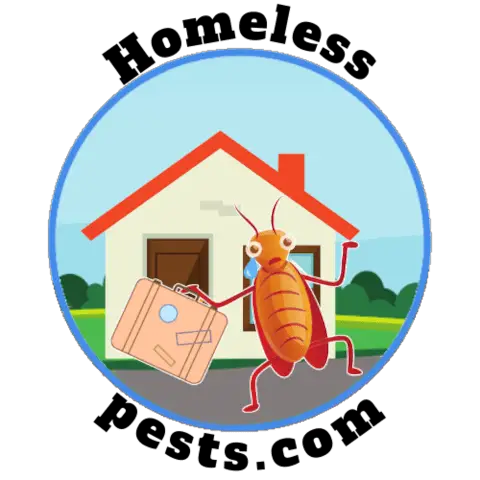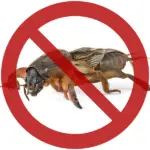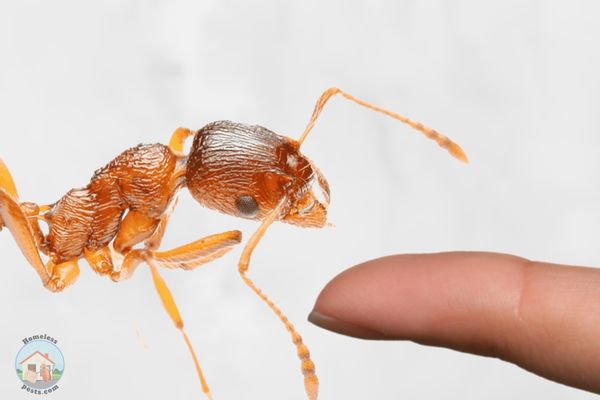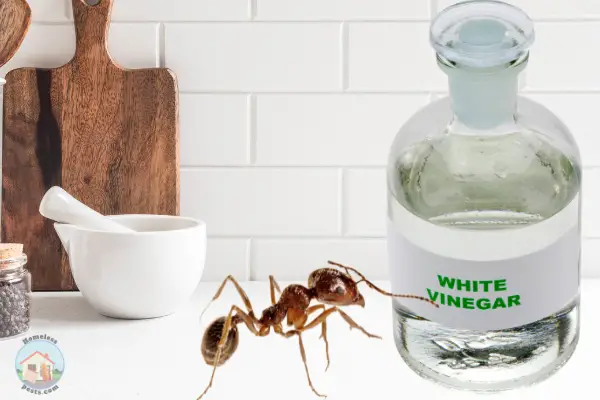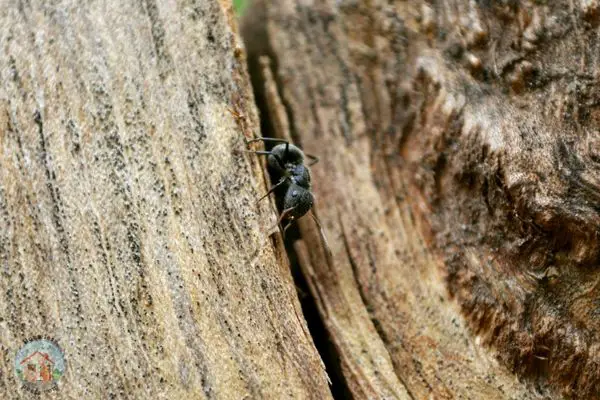If you’ve ever had an ant problem in your home, then you know how difficult it can be to get rid of them. Pharaoh Ants are a particularly troublesome species and can be very hard to eradicate. But don’t worry, with the proper information and some patience, you can get rid of Pharaoh Ants for good.
In this article, we’ll discuss what Pharaoh Ants are, where they come from, and how to get rid of them. So keep reading to learn more!
How to Identify Pharaoh ants
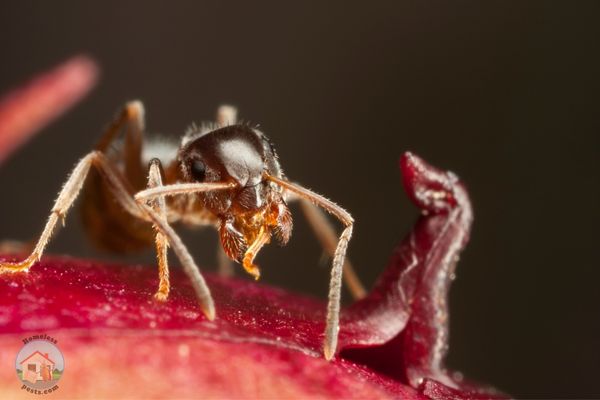
Despite their cool name, having Pharaoh ants in your home is no picnic. These tiny pests are difficult to get rid of and can cause a lot of damage in your home if left unchecked. But don’t worry, there are some things you can do to get rid of them for good.
First, let’s identify the Pharaoh ant. These ants are small, only about 1/16 of an inch long (1.5 mm). They are light brown or yellow in color and have a dark brown or black abdomen.
Pharaoh ants can be confused with other species such as thief ants, bigheaded ants, fire ants, and several other species of small pale ants. For the average homeowner, this probably isn’t a huge concern. In my experience as long as you can tell the difference between the much more destructive carpenter ants and other species, you are all good.
However, just for fun, thief ants have just 10 segments in their antennae which is two less than Pharaoh ants. Thief ants also only have a two-segmented club (at the end of the antennae), the Pharaoh ant has a three-segmented club.
Bigheaded and fire ants have a pair of spines on the thorax whereas the Pharaoh ant doesn’t. Also, most other small pale ants have only one segment on the pedical to the Pharoah ant’s two. (smith and Whitman 1992).
If you really want to be sure of the type of ant you are dealing with, that’s how you do it!
How to identify common US ant species
Below is a quick guide to help you identify the seven most common ants that you will come across around your property.
Fire Ants
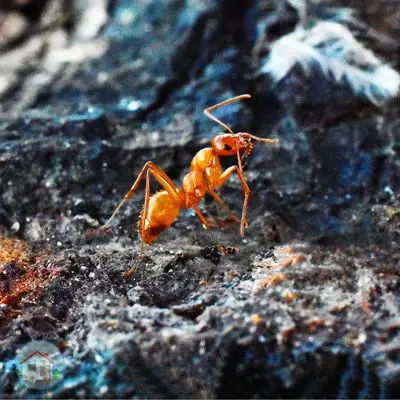
-The red imported fire ant is a common ant found in the Southeastern seaboard and parts of California.
-Fire ants have an exoskeleton and six legs, and their head is typically copper brown in color.
-Worker ants have mandibles, and they use their stinger to inject venom into their prey.
-The result of being stung by a fire ant is a burning sensation and red welts.
-They build a single mound nest in unshaded locations roughly 18 cm tall and 61 cm wide
Odorous House Ants
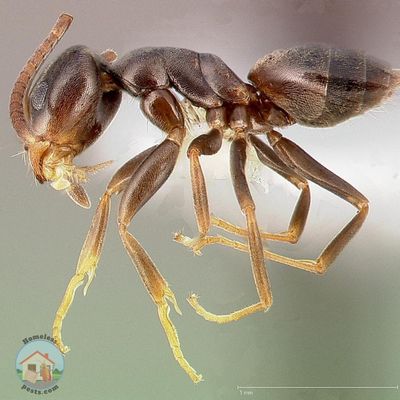
– OHA are small, dark brown to black ants that lack a sting or acidopore and have a slit-like opening on the ventral side of the gaster one segment from the tip.
– Odorous house ants can be found in many places, indoors and outdoors.
– They nest in pre-existing spaces, often near water or food sources.
– OHAs are polygynous, with many queens per colony.
Argentine Ants
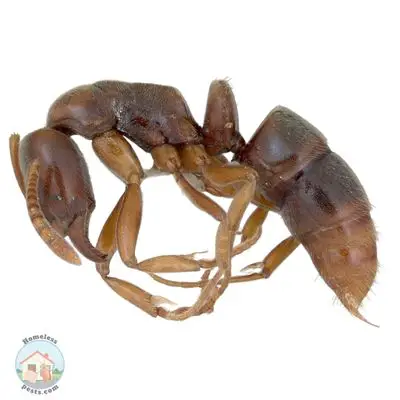
– Argentine ants are typically light to dark brown in color and range between 2.2 to 2.8 mm long.
– They are wingless with a 12-segmented antenna and emit a musty odor when crushed.
– Queens are slightly larger than workers, measuring between 4 to 6 mm long.
– Reproductives queens and males may have wings.
– The most common sign of an Argentine ant infestation is witnessing the trails of ants, often traveling up buildings, trees, and into homes.
Pharaoh Ants

– Pharaoh ants are a small (.2 mm), light yellow to red species of ant that lives in large colonies.
– Pharaoh ants nest in warm, humid areas near food sources like behind baseboards, in walls voids, underneath floors, or behind large appliances.
– Pharaoh ants feed on a wide variety of foods including other insects, sweets, oils, and proteins.
– Pharaoh ants can carry and transmit serious diseases to people including salmonella and Streptococcus.
– Pharaoh ants are difficult to control because they live in large colonies and can “bud” when the colony senses danger meaning the queen will escape.
Thief Ants
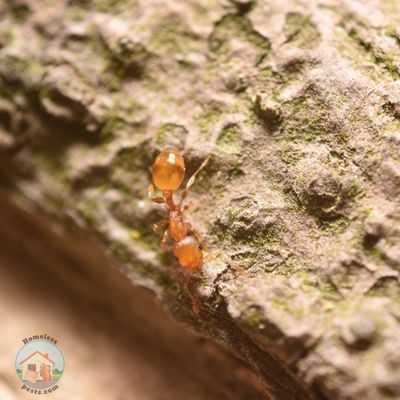
– tiny, yellowish ants that are often confused with Pharaoh ants, but have 2 segments in the club-like structure at the end of the antenna (Pharoah ants has 3 segments)
– lives among other ants and acts as a predator of their brood
– omnivorous and prefer grease or high protein foods over sweets
– often invade houses and may nest indoors in cracks and cupboards
Pavement Ants

– They often construct their nests under the foundation of buildings.
– Small dark brown to black ants (>3mm) that occur in all 50 states.
-There are striations on the head and dorsal surface of their thorax and their 12-segmented antennae end in a 3-segmented club.
-Food can be termites, other insects, sugar or protein based ingredients.
-Pavement ants use a chemical trail to recruit nestmates to a food source.
-Foraging ants are usually active on the floor and along the edge of the walls near door frames at night.
-The workers live for several years and the largest colonies can exceed 10,000 workers.
Carpenter Ants
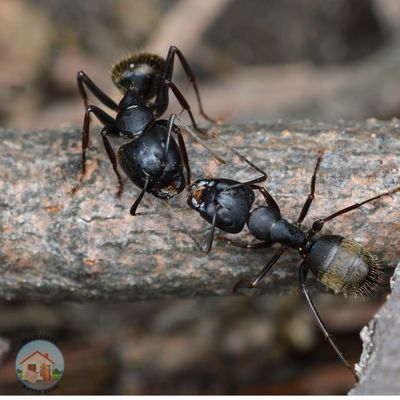
– 24 species of carpenter Ant are recorded in the USA
Carpenter Ants a waist with one node (petiole) and a thorax that is evenly rounded when viewed from the side.
– Workers are usually black or red and black in color.
– Workers usually range in size from 10 – 13 mm in length; one species is just 5mm long.
– Carpenter ant workers of the same species vary in size (major and minor workers).
– Queens and males are larger than workers and have wings. Queens will lose their wings once they start a new nest.
-Queens may be as large as one 2.5 cm.
Understand Pharaoh ants habits

Another way to determine the type of ant you are dealing with is to understand how it behaves and where it likes to live. Pharaoh ants are what is known as a “tramp species”. Unlike Carpenter ants or honey bees which will set up a large central colony, Pharaoh ants will have many small satellite colonies consisting of just a few hundred workers which can quickly splinter off into much larger colonies.
These small satellite colonies are often found in warm, humid places such as behind the fridge, under the sink, or in cracks in the walls. Because they like warmth and humidity, you are more likely to see them indoors during the winter months.
Pharaoh ants will also often build their nests in plant pots or other places where there is a lot of moisture. They are also commonly found inside wall voids around plumbing, around water heaters, under sinks, or near appliances. They can also be found trailing along baseboards, near windows, near doors, or near entry points like weep holes or where pipes penetrate the walls.
Like all ants, the colony relies on scouts to go out and forage for food. Pharaoh ants will start to forage for food early in the morning and you’ll notice more worker ants congregating on food sources as the day continues.
Interestingly for an “indoor” ant, Pharoah ants seem to prefer foraging for food outdoors. Even those housebound ants will more likely venture towards windows and doors than deeper inside your home for food.
Another interesting fact about Pharoah ants is that their scouts follow a similar route to and fro from the nest event when roaming for food. This means that those trails are reinforced daily with pheromones and become pretty established ant highways.
This makes it perfect for the homeowner trying to find the location of an ant nest.
How to find a Pharaoh ant nest
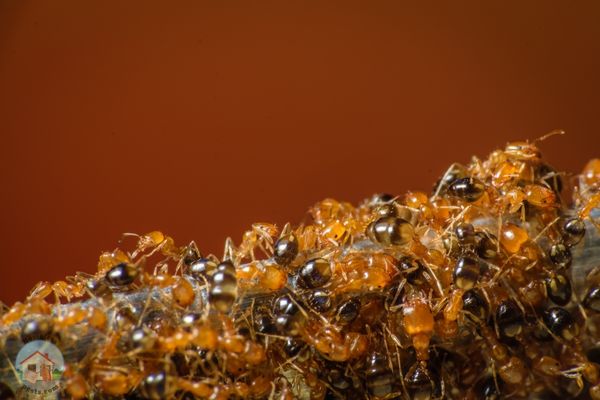
Because you are dealing with a population of up to 300,000 members, locating and destroying a Pharaoh ant nest is no easy task. If you only try to kill off the ants that you can easily see, the colony will just keep replenishing its population from the hidden satellite nests.
The best way to find a Pharaoh ant nest is to look for those well-established trails I mentioned earlier. Once you have found a consistent source of Pharaoh ants, you want to see where they lead you.
To successfully kill off an ant colony and stop a new one from being established, you need to know the likely site of the nest and also how they likely gained access to your property.
Use the right methods to get rid of Pharaoh ants
When it comes to controlling an ant population, you need to hit them in two places at once. You want to kill as many in the nest as possible (and as quickly as possible). At the same time, you want to kill any ants who were out foraging while you were targeting the nest.
There are really two types of insecticide, those that kill on contact and those which kill over a period of time. Which ones you use really depends on how successfully you were in finding the nest and if you can gain easy access to it.
When dealing with ant colonies outdoors, such as with fire ants or carpenter ants, contact killers are often the most effective means of treatment. For Pharaoh ants, however, bait is more commonly used because the nest is not always easy to find and access.
If you use a contact killer, you need to make sure that you’ve hit every last ant. If even one survives, it can start the colony all over again. This is why bait is often seen as a more effective treatment for Pharaoh ants.
With baits, the active ingredient is slowly ingested and then passed on to the rest of the colony through their grooming behavior. This means that even if you don’t get every ant in the initial treatment, you’re likely to get most of them.
When using baits, it’s important to use a product that is specifically designed for Pharaoh ants. These products will often come in gel or liquid form and will be sweetened to appeal to the ants.
While there are many effective baits on the market, one of the most popular is Syngenta (Amazon). This gel bait comes in a syringe for easy application and has been proven to be one of the most effective baits available.
Once you’ve selected a bait, you’ll need to apply it to all of the areas where ant activity is common. This includes kitchens, near appliances, near baseboards, and any entry points into your home.
When baiting, be sure to remove any competing food sources. This means storing food in airtight containers and picking up pet food when it’s not being eaten. By doing this, you’ll increase the chances of the ants eating the bait and taking it back to the colony.
Once you’ve applied the bait, all you need to do is wait. It can take a few days to a week for the treatment to work, but you should start seeing a decrease in ant activity during this time.
If you don’t see any results after applying the bait, it’s possible that you didn’t use enough or that the ants are simply avoiding it. In this case, you’ll need to increase the amount of bait you’re using or try a different product altogether.
When you don’t have direct access to the ant nest, It’s important to resist the urge to spray the ant trails with contact and repelling insecticides. This will cause the Pharaoh Ant to abandon their trails, bud, and split off to create more nests, worsening the infestation.
However, outside your home, you can use a nonrepellent insecticide like Specter 2SC or Tempo SC (Amazon). This is a liquid concentrate that’s labeled for Pharaoh Ant and many different pests.
Just mix this with water (be sure to follow label instructions) and spray this around entry points, such as windows, doors, along baseboards around sinks or wall voids.
Because it’s a nonrepellent the specter will go unnoticed by the ants, controlling them without them even knowing. This gives you a better chance of killing both foragers and those ants inside the nest.
Recommended ant control products

Use this as your first line of defense to bait and kill off ant colonies.
Find the latest deals and prices on Amazon

Liquid insecticides are excellent for building a perimeter around your property and keeping ant colonies in check.
Find the latest deals and prices on Amazon

Stop ants from hiding in walls or cracks by squeezing them out with this insecticide foam.
Find the latest deals and prices on Amazon

Use this gel bait to attract and poison an entire ant colony.
Find the latest deals and prices on Amazon

Use this to flush out ants hiding in walls or cracks.
Find the latest deals and prices on Amazon
Tools for spreading Insecticide outdoors
Battery Powered Sprayer

See the latest deals on Amazon
Broadcast Spreader

See the latest deals on Amazon
Hand Spreader

See the latest deals on Amazon
Follow up with prevention measures for Pharaoh ants
Ants are just a part of life, and they are actually really important for the environment. When they stay outside they do wonders for your yard’s ecosystem. You just need to keep them there.
The best way to stop Pharaoh Ant from coming into your home in the first place is to get rid of food sources and water sources. You can do this by changing a few of your daily routines and habits.
The most important thing you can do is to keep your kitchen clean. Wipe up spills immediately, don’t leave food out on the counter, and wash dishes as soon as you’re done with them. It’s also a good idea to sweep and mop your floors regularly.
Another way to reduce the chances of an infestation is to keep food in airtight containers. This will make it harder for ants to smell and access the food.
Finally, you should try to eliminate any moisture sources in your home. Fix leaky pipes, use a dehumidifier, and make sure your gutters are clean and functioning properly. By doing this, you’ll make your home less appealing to ants and other pests.
I would also recommend that you inspect both the inside and outside of your home for cracks, gaps, and holes. These are all potential entry points for ants and other pests.
If you find any openings, seal them up with caulking or another appropriate material. By doing this, you’ll make it much harder for ants to get into your home.
You can also take some preventative measures to keep Pharaoh ants out of your yard. Keep your grass trimmed and remove any leaf litter, woodpiles, or other potential nesting sites.
You should also try to keep the area around your foundation clear. This will make it easier to spot ant activity and make it less likely for them to find a way into your home.
I also do a regular inspection of my home about once every month or so. This helps me to catch any potential problems early on and take care of them before they become a bigger issue.
How long does it take to kill pharaoh ants?
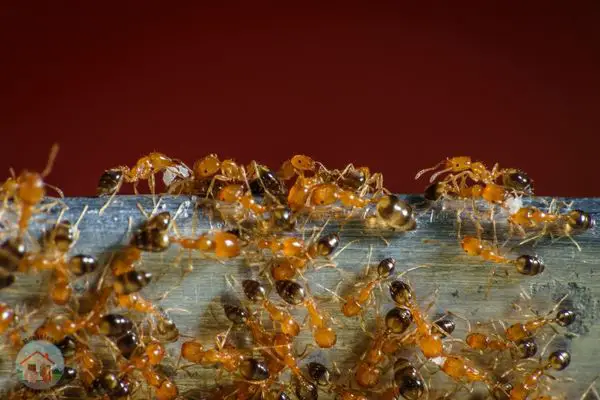
As you’ve probably guessed, getting rid of an entire ant colony is not an easy task. However, if you use a combination of ant bait and contact insecticide you will see a dramatic reduction in activity in 10-14 days.
This may sound like a long time, but it’s much quicker than simply just killing any random ant you see with a contact insecticide. This will only cause the colony to split and create more nests.
When you don’t do things in the right way you really risk the original colony taking fright and relocating, or worse, splitting into more colonies.
If you’re still seeing a lot of ant activity after two weeks, I would recommend that you contact a professional pest control company.
What home remedy kills pharaoh ants?
Although I really recommend following the steps I’ve laid out earlier in this article and using a chemical solution, there are some more natural methods to try.
Borax is a naturally occurring mineral that can be effective in killing Pharaoh ants. You can make a Borax ant bait by mixing sugar with Borax. This home remedy works much in the same way as other commercial ant bait.
The ant is attracted by the sugar, takes the Borax back to the nest, and then kills the rest of the colony. The borax, which is found in things like laundry detergent, is a naturally occurring ant killer. It works by dehydrating the ant and destroying its digestive system. You can read more about this homemade ant killer here.
Another home remedy is to make a vinegar and water solution. Vinegar isn’t actually going to kill ants, but it will deter them.
If you spray a vinegar solution around the inside of your home and on entry points, it will create an invisible barrier that ants don’t like to cross. The vinegar acts as an ant repellent and will keep them out of your home.
You can also use vinegar directly on ant trails. This will disrupt the pheromone trail that ants use to communicate. When the trail is disrupted, the ants will have a harder time finding their way back to the nest.
You can read more about this homemade ant repellent here.
Another great ant killer is called diatomaceous earth. This is a naturally occurring substance that is made up of the fossilized remains of tiny algae. It works by puncturing the ant’s exoskeleton and causing it to dehydrate and die.
You can read more about this home remedy here.
What temperature kills pharaoh ants?
According to a study done on the cold tolerance of pharaoh ants, they begin to suffer below 8°C (46.4 °F). When an entire colony was exposed to temperatures around and below 0°C (32°F), it was eradicated within 6 days. The results also showed that the queen was just as susceptible to these lower temperatures as the workers.
On the hot side, another study suggested that pharaoh ants would begin to die off after 3 weeks of exposure to temperatures of around 26°C (78.8°F).
As homeowners, it’s going to be much easier to allow your home to heat up rather than cool down to harmful temperatures for pharaoh ants. Nonetheless, using temperature as an effective means of pest control isn’t really a viable one.
Are pharaoh ants aggressive?

For humans, pharaoh ants aren’t really considered to be an aggressive species. They are so small that they really aren’t a threat to us. In fact, they are often considered to be a nuisance more than anything.
In addition, pharaoh ants are not known to be aggressive even towards other insects. Even when they live among more aggressive ant species, studies show that these types of ants remain quite passive.
Are pharaoh ants harmful?
Pharaoh ants can become a problem in hospitals and other medical facilities because they are known to spread diseases. In terms of physically harming humans, they really aren’t much of a threat.
If you can keep these ants outside of your home, then you really don’t have anything to worry about. They can become a problem if they enter your home in large numbers and start to build their nests inside.
This is why it’s so important to get rid of them as soon as you see them. The sooner you act, the easier it will be to get rid of them.
Final thoughts
Although these little ants might seem pretty harmless, they are a real nuisance because they choose to nest inside of our homes. If you have these ants in your home, it’s important to get rid of them as soon as possible.
The best way to do this is to find their nest and destroy it. Once you’ve done that, you can use some of the home remedies mentioned above to keep them from coming back.
